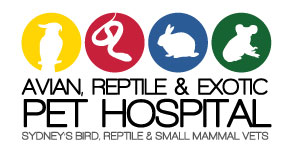Petra graduated at the University of Vienna, and after training in birds and exotics, she went on to complete externships in northern Italy and Brazil.
Petra then worked as a vet at the Loro Parque (Tenerife, Spain) which has the most extensive parrot collection in the world before heading back to Northern Italy, where she almost exclusively worked with exotic animals in Italy, Spain and Austria.
Petra completed her residency for the European College of Zoological Medicine (Avian Specialty) and will soon sit the ECZM exam. Further, she holds the General Practitioner Certificate in Exotic Animals, and she is also a lecturer for the same GP Cert in Spain. Petra Schnitzer also holds a postgraduate certificate in Laboratory Animal Welfare and Care, from the University of Milan. Her main interests are avian cardiology, ultrasound in exotic species and avian anaesthesia. Petra moved to Camden to join the team at AREPH in January 2019 with her husband Dr Lorenzo Crosta and their daughter Leni Sofia (2 years and 7month).
What made you become a vet and an exotic vet in particular?
I grew up surrounded by pet dogs, cats, chickens and budgies. Anytime my animals were sick, we would take them to the vet, and I was fascinated with how the vet diagnosed and treated them. I loved to see the animals getting better, and I wanted to learn the biology and physiopathology behind the diseases.
I always wanted to work with exotic and small animals, but when I worked at the University of Vienna with the great exotic animal vet team there, I fell utterly in love with exotic animals.
What is the most interesting or challenging case you’ve worked on?
There have been several, but the most challenging case, not only medical but also emotional, was a scarlet-fronted parakeet named Rick. I was working at the Zoo with very rare birds, marine mammals and big cats. But this ordinary parakeet came into the hospital several times, but the reason for his intermittent lethargy could not be found.
I was already by then very passionate about ultrasound, and so, with the high level of equipment available, I did my first ultrasound on a bird. I immediately had my diagnosis of a hydropericardium. This diagnosis is easy to make in dogs and cats, but sadly in birds, it is often a postmortem finding. I adopted the bird and treated him for some months, but unfortunately, he had to be euthanised. I was happy to provide a good quality of life even if it was only for a few months.
How is AREPH different from other practices you have worked at?
Well, I have worked in private practice, university and zoo environments. AREPH is different because of the unique Australian wildlife species which are not seen anywhere else in the world. It is so special; I am especially fascinated by the Echidnas.


